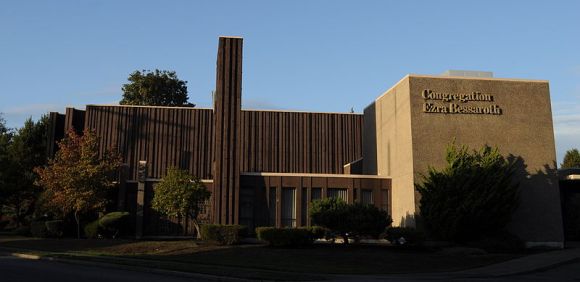Congregation Ezra Bessaroth
In 1904, Nessim Alhadeff and a group of Sephardic Jews from Rhodes founded Congregation Ezra Bessaroth in Seattle.
Originally, they organized as Koupa Ozer Dalim Anshe Rhodes, which was shortened to Ezra Bessaroth in 1909.
By then, the congregation included 35 Orthodox men.
High Holiday services were conducted by Haim DeLeon, a shoemaker from Rhodes.
High Holiday services were held in rented rooms at 9th and Yesler, as well as the Washington Hall building at 14th and East Fir.
Due to the inconvenience of other parties renting Washington Hall, the congregation made it a priority to build a synagogue.
The First Building – 1912-1916
In 1912, Congregation Ezra Bessaroth shifted its mission from benevolent society to synagogue.
In 1914, it was officially incorporated as Koupa Ezra Bessaroth of Rhodes.
In 1915, Congregation Ezra Bessaroth purchased two lots on the corner of 15th and Fir Street for $7,000 in hopes of raising enough money to build a formal synagogue.
For the High Holidays, it rented a room at Washington Hall.
However, after being forced to vacate before the conclusion of the service, due to a dance being held by another group, the congregation prioritized its fundraising efforts.
The house on 15th Avenue was remodeled to accommodate Shabbat services (morning and evening). The house was a landmark and remained standing beside the synagogue.
The house on Fir Street became the Ezra Bessaroth Talmud Torah, offering classroom space as well as the congregation’s sukkah (temporary hut for the holiday of Sukkot). The building remained standing until the 1930s.
With the help of members of Temple De Hirsch, the Reform congregation of Seattle, Congregation Ezra Bessaroth raised enough money (about $20,000) to build a synagogue.
The Ezra Bessaroth Annual Purim Bazaar was initiated as a fundraiser for the new building.
The building officially opened its doors in 1917.
Congregation Bikur Cholim, another Orthodox synagogue, was located nearby at East Fir Street and 20th Avenue.
The interior of the temple was hand painted by Mr. Moskin, and there was a stained glass window over the ark housing the Torah. This original window is on display inside the current synagogue.
In 1918, Reverend David J. Behar became the hazzan of Congregation Ezra Bessaroth, a position he held for about sixty years.
Hazzan Behar filled the synagogue with Turkish-influenced music, taught classes in Judeo-Spanish, and was active in Seattle’s Sephardic theater movement.
In 1933, land was purchased for the Sephardic Brotherhood Cemetery. Previously, burials took place at Herzl Cemetery.
In 1939, Rabbi Isadore Kahan served as Spiritual Leader of both Congregation Ezra Bessaroth and Sephardic Bikur Cholim.
He held this position for twenty years, until retiring in 1950.
Congregation Ahavath Ahim closed in 1940.
Membership was split between Sephardic Bikur Cholim and Congregation Ezra Bessaroth.
The Second Building – 1957-1970
The year 1957 found most of the congregants of Ezra Bessaroth living far from the synagogue building on Fir.
They began building a new synagogue near Wilson Avenue in the SewardPark district.
The school and social hall were completed in 1957 and the synagogue’s vestry was dedicated in 1958, though construction on the rest of the synagogue was delayed until about 1969.
In 1962, Rabbi William Greenberg ascended the pulpit and served as rabbi of Congregation Ezra Bessaroth for 28 years.
In 1970, the new synagogue building was completed and dedicated.
Its design was similar in style to Temple Tifereth Israel in Los Angeles, which also held its groundbreaking ceremony in late 1970.
Congregation Ezra Bessaroth currently thrives at 5217 S. Brandon Street.
The spiritual leader, Rabbi Ron-Ami Meyers, has served the congregation since 2011.
Sources
- William M. Kramer, comp., “Selected Annals of Ezra Bessaroth, Seattle’s Rhodesli Congregation,” Western States Jewish History 29/1.
- Congregation Ezra Bessaroth, www.ezrabessaroth.net
Samantha Silver is curator for this Congregation Ezra Bessaroth exhibit.

